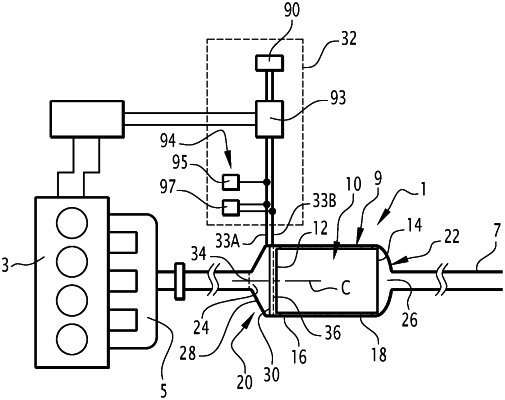| CPC F01N 3/2013 (2013.01) [F01N 2240/16 (2013.01); F01N 2240/20 (2013.01); F01N 2260/18 (2013.01)] | 19 Claims |

|
1. A heating member for a vehicle exhaust gas purification device, adapted to be arranged opposite and at a distance from an upstream or downstream face of the vehicle exhaust gas purification device, wherein said heating member comprises:
an electrically conductive peripheral frame having an inner edge with a geometric centre, a central support arranged substantially at the geometric centre, and a perforated heating grid, centered on the geometric centre and extending from the central support to the electrically conductive peripheral frame, said perforated heating grid being formed of a plurality of elongate heating elements each having first and second ends opposite one another, the first end being linked to the electrically conductive peripheral frame and the second end being linked to the central support, each elongate heating element occupying a respective angular sector of the perforated heating grid and being arranged in zigzag manner within that angular sector so as to form a succession of strands connected by nodes and being linked by said nodes to the plurality of elongate heating elements occupying neighbouring angular sectors, and wherein the strands form concentric rings centered on the geometric center.
|